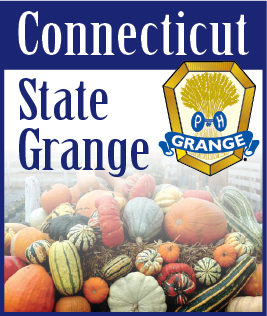 |
|
 |
|
 |
|
 |
 |
| Agriculture / Conservation News |
|
 |
The changing face of Connecticut agriculture |
| |
By Janet Healey, State Agriculture Director |
| |
FEBRUARY 2008 --
In our conventional way of thinking, when we picture agriculture, we see large dairy farms and/or extensive garden/produce areas. Today the word agriculture involves many facets, including smaller farms. This is not a new phenomena, for in the past there were many small farms where the owner/operator either lived frugally or worked elsewhere to earn money.
Today the picture is somewhat like this, though the large farms in New England are having a struggle to remain strictly a farm, and have had to diversify. In our next few articles we are going to address different types of farms and farmers.
On Beach Street in Litchfield is a farm called the Damiani Farm. It is run by a young man (Ray Damiani, a Grange member in his 40’s) who is in the second generation, having taken over from his father (who is also a Grange member) who ran a dairy operation. This type of farming continued until 2002, when the cows were sold, as Ray put it, after 31 years of milking. His main source of income now is as a farmer cutting and selling hay, which is the work of several other farmers in Litchfield County.
However, Ray has a second interest (a hobby which covers his cost and brings in a little extra) which is rabbits, large rabbits called Flemish Giants. Ray became interested in rabbits as a child when his father introduced him to 4H and rabbits to teach him responsibility in a humanitarian way. At that time he had mixed breed rabbits which his father bought for him, and which he bred. About 1990, he sold all his rabbits because, as he said, he became interested in other things (maybe girls).
In 2002, he bought his first Flemish Giants. His main interest in showing them in competition which he has done in such places as Michigan, North Carolina, Pennsylvania, New York, South Dakota, Oklahoma. He has sold them as far as Granada and Trinidad. This is not just a United States undertaking, but is international in scope.
Ray’s success in this undertaking is evidenced by the many trophies he has won. He is now #3 in the nation as a breeder, having between 300 to 400 breeding rabbits, and they breed often. To show an animal at a show, it must meet certain standards which means near perfection. Thus obviously, most of the rabbits do not meet this standard and are sold either as pets or for food.
Recently Ray has had his rabbits featured as part of an ad in the “Women’s Health Magazine” and ads for the Burlington Coat Factory. Ray says this is good publicity but hardly profitable. That is why this is mainly a hobby, but a working one that brings in some remuneration.
Now to another subject, Gordon Gibson has written about the Farm Bill. We in Litchfield County receive a weekly newspaper called the Litchfield County Times. In the January 4 issue there is an article written by several different people in different walks of life concerning the farm bill and the recent defeat of the Grassley-Dorgan Amendment that would have reined in payments to large-scale agri-businesses and capped farm subsidies at $250,000.
The defeat of this amendment has an affect on Connecticut and New England as the average payment to farms in our state is about $3,500.00. The article encourages us to e-mail our senators (visit their websites at: dodd.senate.gov and Lieberman.senate.gov) as well as your representative and ask them to join together in urging the conference committee to adopt subsidy limits and redirect savings to important programs like those in the Grassley-Dorgan amendment in the final bill.
|
| |
|
| |
|
Your rating has been saved
|
|
|
|
|
|
|
 |
| |
 |
|
|
|
|
